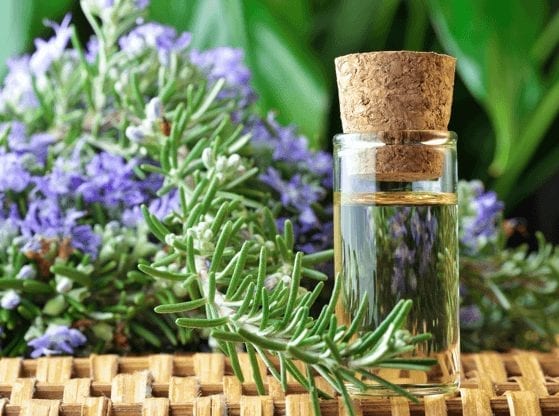Acupuncture and aromatherapy are two individual modalities that have been used for thousands of years to successfully treat a gamut of conditions and diseases. But what happens when they are combined together in one treatment? Is the treatment session more effective? Is there no difference at all? Does it increase patient satisfaction and comfort? I set out to answer these questions in 2011 while obtaining a doctoral degree in acupuncture and Oriental medicine. What I discovered suggests that, yes, combining aromatherapy with acupuncture can make a treatment more effective.
The Impact of Stress on Health and Treatment
What is something that nearly all patients complain about? Stress. Stress is something that affects every one of us one way or another, especially our patients. Some may even take it further and suggest that stress is the underlying cause or root of the majority of the conditions we treat.
Many of us know from personal experience that we can effectively reduce stress with acupuncture treatments. In fact, this notion has been proven through multiple studies and a great deal of clinical research. But what if we add aromatherapy to an acupuncture treatment, which is aimed at reducing stress levels? Will the addition of aromatherapy reduce stress even more? To determine this, I ran a clinical trial comparing the efficacy of reducing stress levels from an acupuncture treatment alone to a treatment session where acupuncture was combined with aromatherapy.
Research Gap in Aromatherapy and Acupuncture
In the early days of gathering research for my clinical trial, I was immediately surprised that I could not find a single published study or clinical trial on the combination of aromatherapy with acupuncture. I found three trials wherein acupressure was combined with aromatherapy, but none where acupuncture was combined with aromatherapy–an opportunity to enter uncharted territories.
The next step was to select a study design for my trial: a randomized, double blind, placebo controlled pilot study. At the time I remember several people asking me, “How can you have a placebo when performing a trial on aromatherapy?” “You either smell something or you don’t, right?” Well, it turns out that many of the previously performed trials on aromatherapy that elected placebo controlled trial designs simply utilized spring water or alcohol as a placebo. In many of these studies, saturated cotton balls were placed on the chest area near the study participant’s nose. The cotton balls either contained aromatherapy (the intervention) or spring water (the placebo). Therefore, I decided to adopt the same deliver method and water-based placebo for my trial.
Clinical Trial Insights: Acupuncture and Aromatherapy Combined
For the acupuncture portion of the trial, I created a point protocol that was made up of acupuncture points that had all been previously proven to reduce stress. The protocol included Liver 3 Tai Chong, Large Intestine 4 He Gu, Stomach 36 Zu San Li, and Yin Tang M-HN-3. This protocol provides a simple and effective stress reducing treatment. Next, I formulated an aromatherapy blend of essential oils, each of which had also been proven to reduce stress levels. The blend included Ylang-ylang, rose, grapefruit, and lavender all-natural essential oils. From here I had to select study participants, preferably a demographic with inherently high stress levels.
Fortunately, finding study participants was an easy task for me as I was, at the time, the off-site supervisor at an in-house drug and alcohol rehabilitation facility for women. Under my supervision, acupuncture students would provide treatments to the patients that resided at the center, many of who were court-ordered to be there, had their children taken away from them, and/or were required to be there for up to 18 months. Believe me when I tell you these women had high stress levels. So, with approval from the center’s corporate headquarters, I recruited thirty (n=30) women to be study participants. I acted as the primary researcher/acupuncturist. A prior student of mine who was subsequently waiting acupuncture licensing was my amazing research assistant who administered the aromatherapy, conducted all the paperwork, and helped me manage the trial.
Implementing the Trial and Analyzing Results
The thirty participants were randomly assigned to either Group A (n=15) or Group B (n=15). While all thirty participants began the six week trial and completed at least two treatments, by the end, only fourteen had completed the entire 6-week trial with Group A containing six (n=6) participants and Group B eight (n=8). High participant attrition was a reflection of participants having to appear in court or attend to sick children, thereby missing a treatment session. The trial had a strict policy that if a participant missed a single treatment session, they would be removed from the trial. Unfortunately, due to this policy and the demands on this particular participant population, we lost more participants that we had anticipated. In retrospect, perhaps a trial length of only four weeks or a study design that allowed for one missed treatment may have yielded higher outcomes. Nonetheless, we ended up having an adequate number of participants and sufficient data to provide results.
Are you interested in becoming a certified acupuncture professional?
Visit the links below to explore our specialized acupuncture programs at a campus near you:
Each week, for six consecutive weeks, participants came in for a 30-minute treatment session. All participants received the exact same acupuncture treatment from the same primary researcher/acupuncturist (me). Every acupuncture treatment protocol was exactly the same using the following points: Liver 3 Tai Chong, Large Intestine 4 He Gu, Stomach 36 Zu San Li, and Yin Tang M-HN-3. After needles were inserted, I left the room and the research assistant would come in and administer the aromatherapy by spraying the contents of either Bottle A for Group A or Bottle B for Group B on a cotton ball and placing the saturated cotton ball on the participant’s chest, near their nose. The cotton ball would remain on the participant’s chest as they rested during treatment. After 30 minutes, the research assistant would return and remove the cotton ball from the patient’s chest and from the room before I would return and remove the needles. The rooms were aired out between treatment sessions and neither I nor my research assistant knew which bottle contained aromatherapy or spring water, thereby ensuring the closest thing as possible to a double blind placebo controlled trial design.
To measure stress level, two instruments were used: the Perceived Stress Scale (PSS) and the SF36, both of which are nationally recognized instruments for measuring stress levels and quality of life, respectively. Participants completed both surveys prior to beginning the trial and after the sixth treatment session. The following table provides a summary of the trial results:
|
SF 36 Survey |
Perceived Stress Scale Healthy = 13.7 (decrease preferred) |
|||
|
Group A |
Group B |
Group A |
Group B |
|
|
Before |
39.5 |
45.5 |
29.2 |
26 |
|
After |
50.9 |
49.9 |
18.7 |
19.6 |
|
Difference |
+11.4 |
+4 |
-10.5 |
-6.4 |
As you can see from the results, both groups benefitted from the treatments. The aromatherapy group and the placebo group both experienced an increase in quality of life (SF36 survey scores) and a decrease in stress levels (Perceived Stress Scale scores). However, the data revealed evidence that Group A had better results compared to Group B. In fact, despite the small sample size, statistical significance was achieved from the before and after scores of the SF36 Survey.
Given these results, can you guess which group received the real aromatherapy with their treatments and which group received a placebo? Yes, Group A received the real aromatherapy intervention and Group B received a placebo of spring water.
This trial proved two things that I find exciting for our profession: (1) confirmation that acupuncture is effective in reducing stress levels, and (2) strong evidence that combining aromatherapy to an acupuncture treatment may increase efficacy. Furthermore, these results lead us to several questions: what if we combined aromatherapy with acupuncture in treating pain, headaches, high blood pressure, weight loss, diabetes, anti-aging, prevention, and/or fertility? There are so many areas for further exploration. It is my hope that my findings will not only lead to future trials and research centered around the efficacy of combining acupuncture with aromatherapy, but also that more practitioners will consider incorporating aromatherapy into their practice.
Featured Posts:

